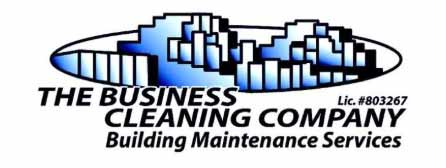Dust mites, though microscopic and invisible to the naked eye, can significantly impact indoor air quality and health, leading to allergies and respiratory issues. This article aims to shed light on effective strategies to mitigate dust mites in your home, ensuring a cleaner, healthier living space.
Understanding Dust Mites
Dust mites are prevalent in homes, thriving in mattresses, pillows, upholstered furniture, and carpets. They feed on dead skin cells and prefer humid environments. Dust mite allergens can trigger symptoms such as sneezing, itching, watery eyes, and asthma attacks. Addressing this issue is vital for maintaining a healthy home environment.
Effective Strategies to Control Dust Mites
1. Consistent Cleaning and Vacuuming
Regular cleaning is crucial in the fight against dust mites. Use a vacuum equipped with a HEPA filter to effectively capture dust mite allergens from carpets, upholstery, and curtains. Additionally, wiping surfaces with a damp cloth can help minimize the dispersion of dust particles.
2. Hot Washing Bedding and Linens
Frequently launder your bedding and linens in hot water (at least 130°F or 54°C) to kill dust mites. Consider using allergen-proof covers for mattresses and pillows to block mites from penetrating these areas.
3. Maintaining Low Humidity Levels
Dust mites flourish in moist conditions, so it’s essential to keep indoor humidity below 50%. Dehumidifiers can help control moisture in prone areas like basements and bathrooms, creating an environment less inviting to dust mites.
4. Allergen-Proofing the Home
Reducing allergens can significantly impact dust mite populations. Opt for hard flooring over carpets if possible, as it’s easier to keep clean and less hospitable to mites. For those with upholstered furniture, select materials that deter dust mites. Regularly clean curtains, or better yet, replace them with washable window treatments.
5. Utilizing Dust Mite Sprays and Treatments
Various products are designed to combat dust mites, containing ingredients that neutralize allergens. When using these sprays and treatments, follow the instructions carefully and use them as part of a broader dust mite control strategy.
Special Considerations for Offices
In office settings, where carpeting is common and can trap dust mites, commercial carpet cleaning services are often necessary. These services can provide a deeper clean than standard vacuuming, using hot steam processes and specialized cleaning agents to remove mites more effectively. Additionally, consider:
- Regularly cleaning all office equipment, including areas prone to dust accumulation like shelves and the tops of unused books or folders.
- Implementing air cleaners to remove dust from the air before it settles into carpets and furniture.
Conclusion
Managing dust mites is a crucial step toward healthier indoor air quality. By implementing thorough cleaning practices, maintaining low humidity levels, and using targeted treatments, you can significantly reduce dust mite populations in your home or office. Consistent effort is key to minimizing their impact on health and ensuring a cleaner, more comfortable living environment. Start incorporating these strategies into your routine and experience the benefits of a dust-free, allergen-reduced space.
Sometimes, normal carpeting cannot remove the remains of dust mites and that is why commercial carpet cleaning needs to be called in. The fibers of most carpets have a rough fibrous surface that hold dust mites within the pile even when a normal vacuum cleaner is used to suck them out. Only a commercial carpet cleaner coupled with specialist cleaning agents can do a proper job of removing them almost completely, the operative term here is ‘almost completely’ because dust mites are impossible to entirely eradicate.
Let’s look at the best strategy is for keeping your office as free of dust mites as possible.
- Use a commercial carpet cleaning service that regularly cleans carpets and schedules the use of a hot steam process at least every six months in conjunction with appropriate pesticides.
- Eliminate as much dust from the environment as possible from things like shelving and desks which can accumulate dust in large amounts if left unattended. This means that the cleaning contract should involve cleaning all office equipment especially hidden shelves and the tops of books or folders which may be left unused for long periods of time.
- Look at the possibility of installing air cleaners which will rid the air of dust before it can settle into the carpet.





